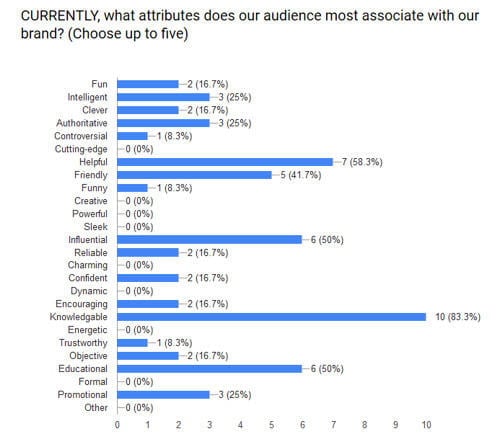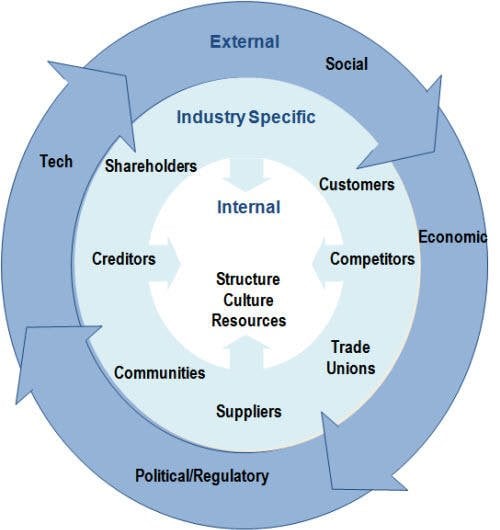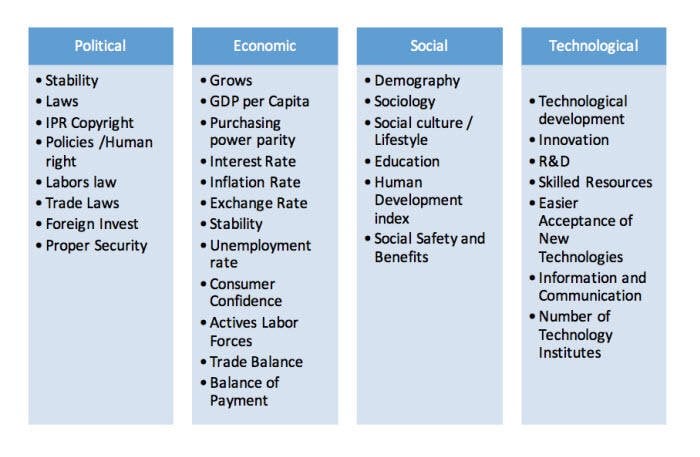You can get the full experience in our video below, and this entire post is dedicated to answering that question, but for simplicity’s sake, here’s how to do a SWOT analysis:
- Gather your team together—ideally bring candy.
- Set up your quadrants—on a whiteboard or projector (perhaps using our template).
- Start with strengths—ask the below list of questions.
- Follow suit with weaknesses, opportunities, and threats.
- Organize the information collected into a neat and tidy document.
- Send out to the team with notes.
- Organize a second meeting to come up with action items and owners.
SWOT analysis questions
Like feature-benefit matrices, there are several ways to conduct a SWOT analysis. However, regardless of how you choose to structure your analysis, we need to start by asking a series of questions. Here is a breakdown of the questions you should seek to answer when performing your SWOT analysis.Strengths questions
Let’s take our first element, Strengths, for example. To determine what your strengths are as an organization, you could begin by asking some of the following questions:- What do your customers love about your company or product(s)?
- What does your company do better than other companies in your industry?
- What are your most positive brand attributes?
- What’s your unique selling proposition?
- What resources do you have at your disposal that your competitors do not?

Positive brand attributes associated with WordStream, as identified by our customers
Weakness questions
We can use the same principle to determine your company’s weaknesses:- What do your customers dislike about your company or product(s)?
- What problems or complaints are often mentioned in your negative reviews?
- Why do your customers cancel or churn?
- What could your company do better?
- What are your most negative brand attributes?
- What are the biggest obstacles/challenges in your current sales funnel?
- What resources do your competitors have that you do not?

Opportunities questions
Identifying opportunities and threats may require you to conduct in-depth competitive intelligence research about what your competitors are up to, or the examination of wider economic or business trends that could have an impact on your company. That’s not to say that opportunities and threats cannot be internal, however; you may discover opportunities and threats based solely on the strengths and weaknesses of your company. Some possible questions you could ask to identify potential opportunities might include:- How can we improve our sales/customer onboarding/customer support processes?
- What kind of messaging resonates with our customers?
- How can we further engage our most vocal brand advocates?
- Are we allocating departmental resources effectively?
- Is there budget, tools, or other resources that we’re not leveraging to full capacity?
- Which advertising channels exceeded our expectations – and why?
Threat questions
When it comes to threats, you could certainly begin by asking a series of questions like those above. However, it’s often quite easy to come up with a list of potential threats facing your business or project without posing questions beforehand. This could include “branded” threats such as emerging or established competitors, broader threats such as changing regulatory environments and market volatility, or even internal threats such as high staff turnover that could threaten or derail current growth.What is PEST analysis?
While we’re on the topic of internal versus external factors, I wanted to mention a tangential but entirely separate type of analysis closely relevant to SWOT analyses, known as a PEST analysis. Earlier, I mentioned that external factors such as changing regulatory policies and market volatility could be considered threats in a standard SWOT analysis. However, despite their importance, challenges like this are often highly nuanced and driven by dozens or hundreds of individual factors. This can place them beyond the scope or intent of a typical SWOT analysis. This is why many companies also conduct PEST analyses.
- Political
- Economic
- Sociocultural
- Technological
Pros of PEST analysis
One of the main reasons it’s worth looking at PEST analyses is because many of the factors that could end up in a PEST matrix could also be relevant to the Opportunities and Threats in our SWOT analysis. The kind of political and economic turmoil we’ve seen in the United States during the past year, for example, could very well pose legitimate and serious threats to many businesses (as well as some opportunities), but these kinds of obstacles tend to be much more complicated than the opportunities and threats you’d see in most SWOT analyses, given their broader scale and often-complex underlying factors.
Image via Dr. Jean-Paul Rodrigue/Hofstra University